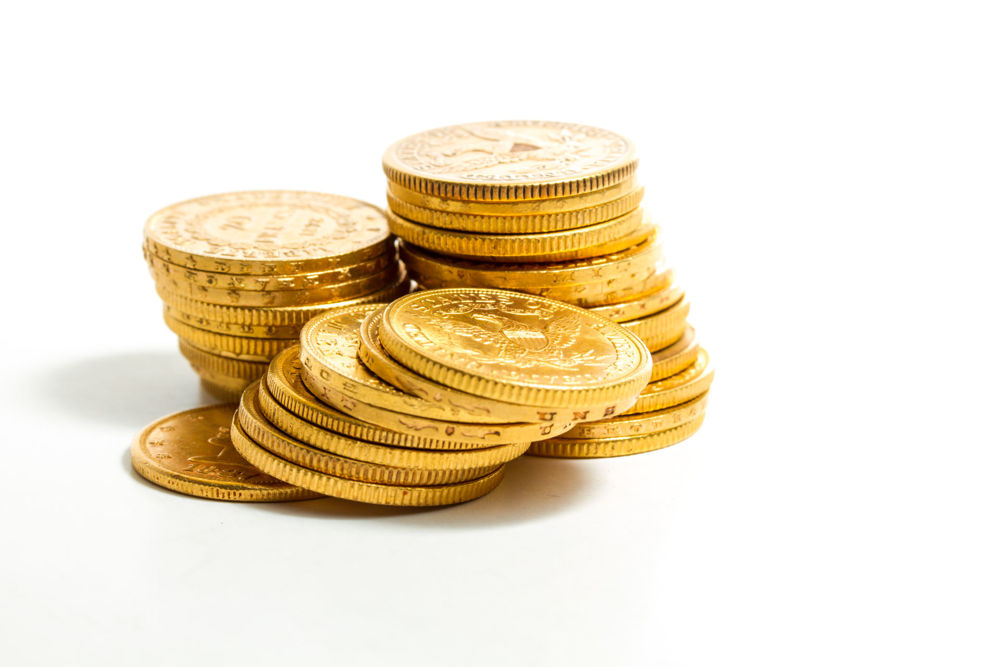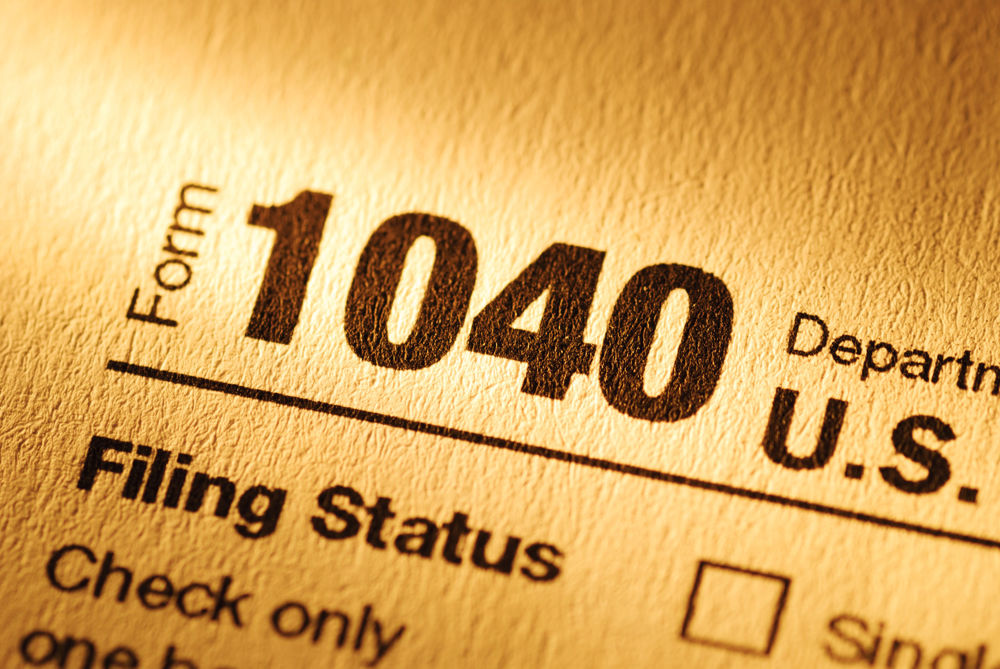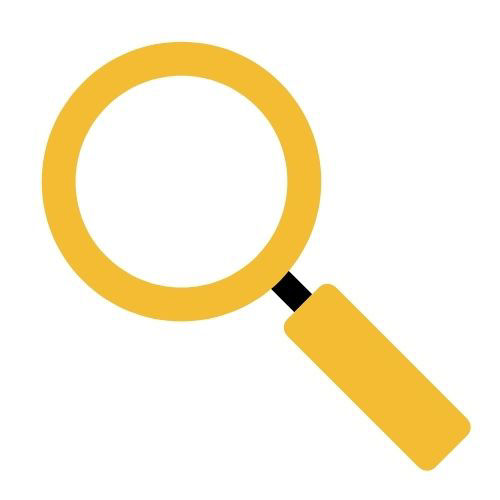Posted on February 05, 2021

Collecting precious metal coins is different from just about every other type of investment or collection you can imagine-but it is one of the more popular ones, gaining traction continually.
During an interview with Larry King years ago, Ian Russell, founder of Great Collections Coin Auctions, estimated that there are likely more than 10 million coin collectors in the U.S. alone.

With the price of gold hitting its all-time high in 2020, that number is likely even larger.
You might think coin collections are subject to the same tax considerations as stocks or art collections. Nothing could be further from the truth. Too often, owners or heirs discover confusing and punishing taxes when they liquidate coin collections. According to IRS regulations, precious metal coins are handled differently than other sorts of collections.
And coin collections are only one part of this puzzle. Savers looking for the best way to invest in the precious metals themselves might find that opening a retirement account works best for them. This too comes with a differently looking tax picture when it comes time to sell.
When deciding to sell, the questions collectors and investors need to ask themselves include:
As you can see, there are plenty of tax considerations that every one of these 10-million-plus collectors must educate themselves on. Whether you are new to coin collecting or a life-long coin enthusiast, this guide should help answer those questions and provide a resource.
Please note: While this guide represents the culmination of dozens of hours of research, and we have taken every effort to ensure accuracy, it should not be considered legal or tax advice. This guide is for information purposes only. We do not provide tax advice as each person’s situation is different. Readers should consult a qualified tax professional for advice specific to their situation. We hope this guide can help you ask the correct questions when you consult professional advisors.
Table of Contents
Before you can even begin answering these questions, you must first keep in mind just what is at stake. As with any investment, a coin collection is an asset that can appreciate in value over the years. But because it isn’t like a stock or a bond, the IRS considers it in a whole different light.
The example below will only discuss federal income tax rates because income tax rates will vary from state to state.
Take this example.
Let’s say Collector A and Collector B each buy one share of stock for $100 and one gold coin for $100 in 2010. Both grew in value over the following decade to $200 each.
Collector A is a high-income earner. Collector B does well but remains firmly in the middle class.
In this scenario, Collector A would owe $23.8 on his stock profit and $31.8 on his coin profit. That’s a 33.6% higher tax rate on coins than on stocks.
Collector B would owe $15 on his stock profit and $22 (or a full 46.7% more) on his coin profit.
In both cases, the profits on coins face a stiffer tax bill. But compared to ordinary income, it can get even more confusing.
On Collector A’s regular income (after the first $518,401), he pays 37%. But for Collector B, he pays the same 22% as he did on his coin profit.

Of course, all of this changes again depending on how long each collector held those coins and how they purchased or acquired them in the first place.
This guide will walk through each of these considerations and should provide you with the full set of resources you need to know when it comes to coin collections and taxes.
There are two major considerations – income level and length of holding – that are crucial to understanding how coin collections are taxed, especially compared to other investments and income.
As with anything tax-related, the first step is to understand how the IRS classifies coins as an asset. Stocks, some real estate, and most other investment vehicles are considered one type of asset, a capital asset. Ordinary W-2 income is taxed differently than gain from the sale of a capital asset.
Precious metals, including coins like the American Gold Eagle or South African Krugerrand, are classified similar to fine art or wine. They are considered “collectibles.”
This means that they carry a very different capital gains rate than stocks or other investments. For coins held more than one year, they are taxed as regular income up to 28%.
In the above example, because Collector B wasn’t in the top income tax bracket, he paid his ordinary tax rate (22%) on his coin profit. But since Collector A was in the top income tax bracket, currently those making more than $518,401 per year, his coin tax rate was capped out at 28%.
That cap of 28% isn’t necessarily as appealing as it sounds for wealthier investors. Long-term capital gains on other investments like stocks are capped at just 20%. For both of these assets, if the investor is in a higher income tax bracket, the gain from the sale of a collectible or from a capital asset will be subject to the federal net investment income tax equal to 3.8% of the gain.
That’s the first major difference between these asset classes. The second? Holding period, or how long you’ve owned the coins.
The IRS makes another major distinction between long- and short-term gains. Here, we’re looking at coin collections held for less than one year and one day, the official IRS cutoff between long-term and short-term capital gains and losses.
For short-term holds, it doesn’t matter if you are talking about stocks, coins, fine art, or ordinary income. In every case, the investor pays their ordinary income rate on any profits.
No matter if you hold a coin collection for months or years, however, the most important number you’ll need to know is your cost basis. And there are a few IRS rules here worth paying attention to.
For instance, when it comes to the IRS, the most important number is your cost basis. Cost basis simply means how much money you spent to acquire an asset. This is true for stocks, houses, cars, and coins. It is this number that all future taxes are based on, hence the name. But unlike many other asset groups, coins are somewhat unique here.
For collections gathered over many years, tracking cost basis can be a challenge. So, make a habit of keeping solid records of when you acquire which pieces of your collection and for how much. Saving receipts is the simplest way to do this.
Collections come with some additional expenses.
For collections, specifically precious metal coin collections, there will be fees just to acquire each piece. There are a number of fees and costs that you can add to your cost basis here, including:
 Commission fees
Commission fees
 Transportation costs
Transportation costs
 Storage costs
Storage costs
 Appraisals
Appraisals
 Insurance
Insurance
The IRS is actually generous here. All of those can be added to the price paid for the coins themselves. Meaning, they can all be added bringing your costs basis up. The IRS term for this is a “step-up” in basis.
That can make a real difference. If you end up paying $10 or $20 in delivery fees on each high-end coin you own, you can add that to your basis to reduce the capital gains taxes on your profits when you sell. If you think about it, the higher the cost basis, the lower the profit. While that sounds bad in theory, that’s exactly what you want when it comes to paying taxes on those profits.
With coin collections, that’s an important consideration many investors simply don’t make when buying and selling. Keeping track of each fee and cost to buy, own, and store your collection can help reduce your tax burden when it is finally time to cash out.
Of course, it’s not always that easy. Often collections are passed down from family member to family member. For the IRS, that’s a major distinction.
Along with other types of investments, coin collections are often gifted from a parent or grandparent or passed down from a parent or grandparent to a child as an inheritance. In most cases, simply taking them to a local antique or collector to sell works just fine. But many gifted or inherited collections are worth far more than even the original owner believed.
With the more than 10 million coin collectors in the U.S., and skyrocketing precious metals prices over the last two decades, that’s more true now than ever before.
Of course, with such a high-priced asset, taxes are a crucial factor in what comes next. There’s some good news on this front, however.
If the coins or precious metal were gifted during the donor’s lifetime, then the donor’s tax basis in the coins or precious metals at the time of the gift will become the donee’s tax or cost basis if the sale of the coins or precious metal will result in a gain.
With respect to coins or precious metals acquired as an inheritance, taxes aren’t owed based on what the original owner paid. Instead, this inheritance event restarts the clock. Think of it this way: when you’ve inherited a coin, you’ve become the owner at the coin’s current value (the same as if you’d bought it) on the date of the donor’s death. Remember that any additional costs can also be added on top of the collection’s value to increase its cost basis.
If an investor receives a coin as a gift while the donor is still alive, then the investor must ask the donor for the donor’s tax basis at the time of the gift.
With respect to an inherited coin, one of the first things a new owner of an inherited collection should do is get it appraised, unless the donor was required to file an estate tax return. If the donor was required to file an estate tax return, the donor was required to have the coins appraised and the donee can get this information from the donor’s estate tax return.
If the donor is not required to file an estate tax return, then the recipient should obtain an appraisal in order to determine the fair market value of the coins on the date of the donor’s death. Again, that’s an IRS-approved element in the cost basis. Once that’s done, and you know what you’re dealing with, you might have to get them cleaned or organized. That too moves the cost basis, because it’s an expense you’ve incurred related to the coins.
In the end, once you have a collection that has been acquired by inheritance in order, you take the fair market value of each coin at the date of the donor’s death and add in those costs. That’s your new cost basis. For old collections, that can be a huge difference from what the previous owner would have owed.
The taxes owed on gifted or inherited collections are then based on any profits made after you find the cost basis and then on income brackets, with a cap of 28% for higher-wealth individuals.
Considering precious metals are renowned for their ability to hold their value in good times and bad, as well as their long-term perceived protection from inflation, this extra benefit is definitely one to consider. The act of inheritance resets the clock each time, no matter how large of a potential profit a person might be sitting on with their collection. And coins, of course, often grow in value as time passes.
This may not be an initial consideration. But when it comes to taxes on long-held collections, it is one of the most important.
There’s one final note to this point. While the U.S. federal government only has an estate tax on large estates, it currently doesn’t have an inheritance tax. However, some states do have inheritance tax laws.
A final consideration, when it comes to coin collections and the tax man, is that it isn’t only the IRS that wants a cut of any profits you might make. Each state has its own tax structure and rules.
There are three main taxes you might face coming from state governments:
All of these vary between each state. According to The Balance, only Iowa, Kentucky, Maryland, Nebraska, New Jersey, and Pennsylvania currently collect inheritance taxes.
You’ll have to check with your own state’s tax bureau to find out the specifics. You can do that by checking out this resource from the IRS, which breaks up the major websites by state.
Of course, there is another avenue you can take if you are less interested in collecting precious metals and more interested in the performance of the metals themselves.
Depending on how you hold coins, where you hold coins, and how you acquired them, you might find your precious metals fall under a completely different IRS classification.
The IRS explicitly allows certain coins, bought and held in a certain way, inside individual retirement accounts (IRAs).
There is a cutoff, however. Only precious metal coins meeting a strict purity level and issued by certain mints are allowed. The same goes for bars and ingots.

Of the four allowable precious metals, here are the eligibility requirements:
In all cases, the coins or bars must have been produced by an accredited refiner, assayer, or manufacturer (on the Good Delivery List), or by a national government mint. They also must be unblemished and free from all damage.
Although American Gold Eagles carry a purity of just 91.6%, or 22 karat gold, since they are the official gold bullion coin of the U.S., the IRS permits them.
Note that numismatic coins, those with values-based more on rarity and collectors’ demand, aren’t allowed in IRAs. This is why it’s important to distinguish between collectors and precious metals investors.
If you fall into the second category and choose to take advantage of a retirement account’s tax advantage, here’s what you need to know.
While the number of eligible coins and bars for IRAs is limited, there are other factors to consider if you choose this route. For instance, not all IRAs are the same. Most conventional IRAs are very similar to 401(k)s and other investment vehicles. They only offer select mutual funds, ETFs, and specific stocks and bonds.
Precious metal investors need to open a self-directed IRA (SDIRA). An SDIRA lets the investor choose which specific investments he or she wants to buy. But for precious metals investors, the IRS goes further than just that.
On top of limiting the number of allowable coins and bars, the IRS also makes it clear that those metals are to only be held through a custodian at a third-party depository. Meaning, you can’t both collect the coins yourself in your own home and hold them in your IRA at the same time. Just like the IRS won’t let you hold your retirement cash in your bank account, precious metals investors aren’t allowed to buy gold coins and store them in a floor safe at home.
This is the crux of why a collector might turn down the tax advantages of an IRA. But for those interested only in the safety associated with precious metals ownership rather than the actual collecting of specific coins, these benefits are important.
A traditional IRA allows for profits to be back ended. That means you can sell coins at any time within an IRA without immediately owing taxes on them. The tax bill only comes at the end, when you take money as a distribution from the IRA itself.
For investors, this can be a huge benefit over a traditional collection. For instance, if you decide that you’d like to reallocate some of your precious metals assets from gold to silver, this is a tax-neutral transaction inside of an IRA. For someone with a physical collection, that would trigger a tax event on the sale of the gold.
But a traditional IRA isn’t the only type of account a precious metals investor might want to consider.
A Roth IRA is front loaded, which means you pay taxes on the income used to contribute to them. However, qualified distributions in retirement are 100% tax free. For many, this is the ideal way to build savings with precious metals. There are no worries about paying 28% in retirement on those profits.
One final note on precious metal IRAs: you can’t contribute coins directly into an IRA. All precious metal IRA investments must be made through a custodian, like any other assets in retirement accounts. So, you can’t turn a collection into an IRA. You must decide what is best for you before you start buying coins.
You can find more on how IRAs work, including the specific rule regarding precious metals at these two IRS pages here and here.
Tax laws are complicated. For collectors and precious metals investors, it is incredibly important to consider how, when, and what they choose to add to their coin collections and retirement accounts. Moreover, they need to have a game plan on when to cash out and how to do that as well.
Here is the full list of considerations you should take away, no matter if you are just starting out or have a second- or third-generation collection in your possession.
It may seem like a lot to get a handle on. But many of these steps need only occur once in the lifetime of the collection or investment. And the difference between paying as much as 37% (such as on short-term capital gains) and 0% (on the distributions from a Roth SDIRA) is a big one.
Of course, the devil’s always in the details. Each collector and investor is different after all. This guide should not be considered legal or tax advice. Here are a handful of additional resources that can help clear up any finer points on coin collection and precious metal tax considerations.